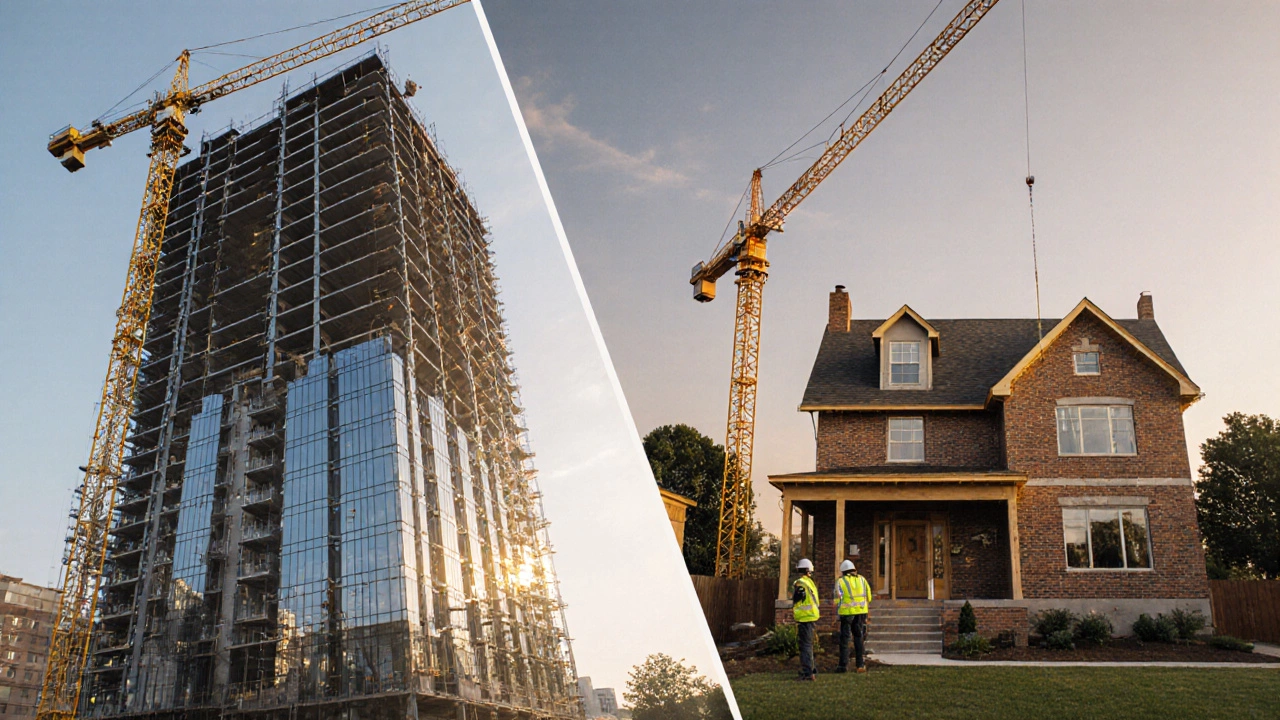Commercial vs Residential: Key Differences Explained
When working with commercial vs residential, the comparison that determines how a building is designed, permitted, and funded. Also known as commercial versus residential, it guides owners, architects, and contractors in choosing the right path. Understanding commercial vs residential decisions starts with two main entities: commercial construction, projects that serve businesses, public services, or industrial purposes and residential construction, homes, apartments, and other dwellings for private living. These categories differ in size, code requirements, and financing models. For instance, commercial construction usually follows stricter fire safety and accessibility regulations, while residential projects focus more on habitability and energy efficiency. Both rely on construction contracts, legal documents that allocate risk, set payment terms, and define scope, but the contract language often varies: commercial contracts include performance bonds and liquidated damages, whereas residential contracts may use simpler fixed‑price agreements. Finally, building codes, the rulebook that ensures safety and quality apply differently – commercial codes address higher occupancy loads and larger structural spans, while residential codes target family‑friendly standards. In short, the comparison of building purpose, regulatory load, and financial structure creates a clear split between the two worlds.
How the Differences Shape Project Planning
One major attribute of commercial projects is the need for extensive site analysis. Engineers often evaluate traffic flow, parking capacity, and utility demand before any ground is broken. This ties back to a semantic triple: "commercial construction requires detailed site analysis". Residential builds, on the other hand, usually start with a simple lot survey and basic zoning check, reflecting the triple "residential construction involves straightforward zoning compliance". Budgeting also diverges sharply. A commercial office tower may cost $200 per square foot, driven by higher material grades, sophisticated HVAC systems, and advanced fire suppression. A single‑family home might sit around $120 per square foot, focusing on comfort rather than capacity. Because of these cost structures, financing methods differ: commercial developers often secure loans backed by projected rental income, while homeowners rely on mortgages tied to personal credit. Project timelines mirror these distinctions, too. Commercial schedules include phases for permitting, public hearings, and multiple subcontractor bids, extending the critical path. Residential timelines are tighter, often compressed into a few months from start to finish. Understanding these attributes helps stakeholders allocate resources wisely, avoid surprises, and meet stakeholder expectations.
Now that you have a clear picture of what separates commercial from residential builds – from code intensity and contract complexity to budgeting and timelines – you can spot the right approach for your next project. Below you’ll find a curated set of articles that dig deeper into cost calculators, profit margins, remodeling sequences, and legal definitions, all tied back to the commercial versus residential theme. Dive in to see how each piece fits into the bigger puzzle and gives you actionable insights for planning, executing, and finishing your build the right way.

